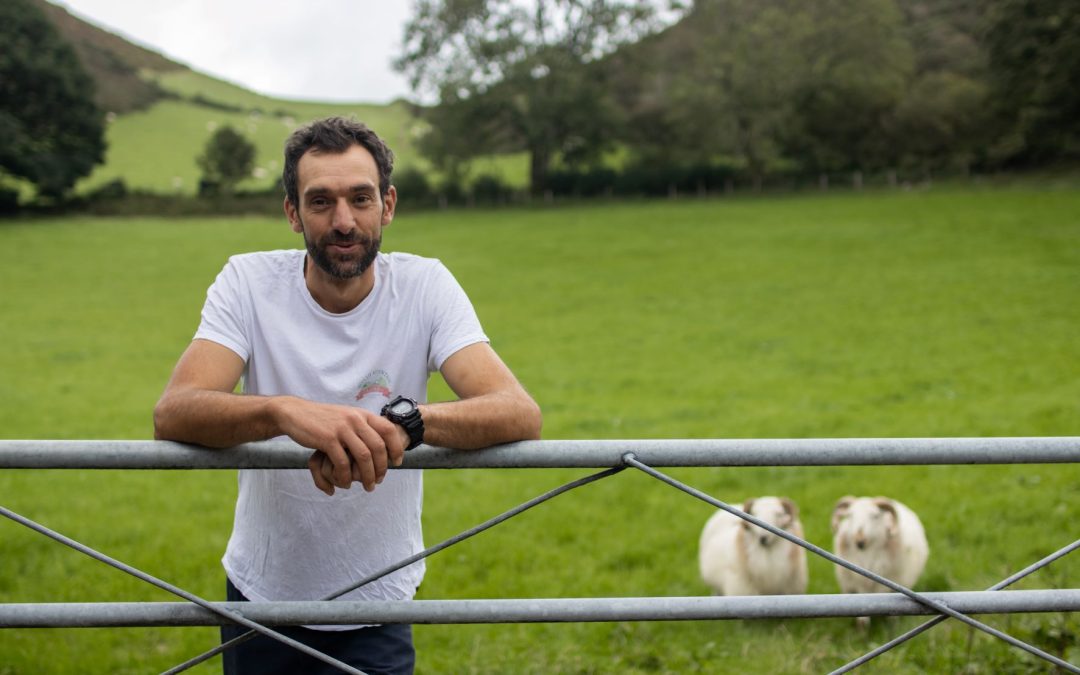“Improving flock output, making more from our own resources and subsequently enhancing the unit’s sustainability are our key objectives,” says Rhodri Lloyd-Williams who together with his father, Simon are amongst the first 12 producers to join HCC’s Hill Ram Scheme and subsequently, Prohill. “We’re focused on increasing genetic merit, producing lambs that meet market requirements from extensive, forage-based systems and breeding rams with known, improved performance.
“The group are using some of the latest technology including DNA shepherding, to select and breed from the best performing animals, producing stock with improved genetic potential to supply the UK hill farm sector.”
ProHill members are using a new Hill Index, developed by Signet and HCC which combines both maternal and carcass traits, to identify the top performing animals. Lamb performance is monitored from birth to eight weeks, giving an accurate picture of the ewe’s maternal ability, whilst from eight to 20 weeks, growth and carcass traits are measured, highlighting the lambs’ own performance.
The gathered data is analysed by Signet to develop various Welsh EBVs to help producers to make more informed decisions in their selection procedures.
The Lloyd-Williams are reaping the benefits of having performance recorded their entire 720-ewe Welsh Mountain flock at Moelgolomen, Aberystwyth for two decades. “We’re in awe of the ewes we’re now breeding and managing, their ability to lamb outdoors at 700 feet and produce lambs that finish solely off forage,” explains Rhodri. “Feeding concentrate can hide the animal’s genetic potential.
“Our priorities are for a hardy 40kg to 42kg ewe since more than half the unit, which rises to 1,500’, is made up of unimproved hill pasture, and the flock is outwintered at the 1,000’ mark.
“Our target has been for the ewes to wean their body weight in lamb and we’re getting there. In 2000, we were producing 11kg to 12kg lambs with many being sold through the market as stores. Last year, we finished off grass lambs to average 14kg deadweight, and the vast majority were within specification – mostly Rs and more Us than Os.
“The ewes are fitter and producing more lambs with no extra feed. Scan has improved from 120% to 145% with 125% lambs reared.”
Selection priorities for the Lloyd-Williams are ease of lambing, survivability and growth rate. Performance recording is an extra tool providing data, says Rhodri. “It is enabling us to find the poorest sheep to cull from the flock – those which simply can’t make it on the hard hill is equally important to selecting the best ewes.
“Joining the ProHill group is enabling us to identify sheep that are consistently performing well for the traits that are most relevant to our flock.
“However, there are other features that are equally important to survivability, for example, we select for teeth which have to be perfect and also for nice tight wool.
“Furthermore, we believe in Body Condition Scoring; overwinter, the conditions on the hill mean that good fat cover is essential to improve winter ewe survival, achieve sufficient milking in spring and subsequently improve lamb survival.
Demand for the Lloyd-Williams’ improved Welsh rams has extended beyond Wales. “Our sheep are finding interest not only from fellow Welsh producers but further afield including Scottish Blackface and Romney flocks. They too are seeking a slice of the action towards a sustainable, low input system which our improved Welsh flock is helping us achieve.”
